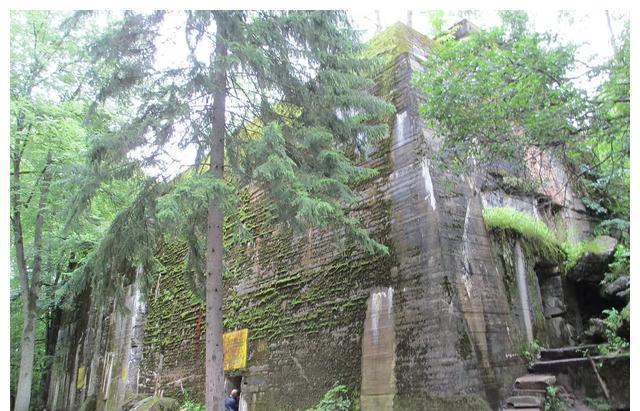Friends who are interested in World War II can point attention, and in the future, this small Qutoutiao number will become the most detailed database of Qutoutiao's World War II information.
In 1940, in order to better realize their strategic ambitions to invade the east, the Nazi high command decided to establish a highly classified command base in the dense forest 8 kilometers east of the town of Rasthenburg in central East Prussia, and in 1941, the command base was completed, Hitler also arrived here on June 23, 1941, and called the base "Wolf's Den", in order to ensure the safety of the Nazi party leader, the Wolf's Den set up multiple protective barriers, and the internal core area was responsible for the Imperial Security Service. The perimeter defensive lines were borne by the leader's escorts.

(Photo 1: The "Wolf's Lair" of Hitler's Eastern Front Command hidden in present-day Könchen County, northern Poland)
In terms of organization, the troops responsible for the security of the wolf's lair perimeter were subordinate to the Great German Infantry Regiment of the Wehrmacht, and with the gradual expansion of the Great German Infantry Tuan into division-level group exhibition units, the units under its jurisdiction were also newly expanded. In April 1943, a unit called Führer Grenadier Brigade was formed, becoming the second escort unit on the outskirts of the Wolf's Lair. The huge war attrition of 1944 forced Nazi Germany to further expand its army, and on July 10 the unit was reorganized in Bad Fallingbostel, Lower Saxony, Germany, as the fuehrer's guard, naturally representing the façade of the event, the best soldiers and mid-level commanders were selected by the Great German Panzergrenadier Division, and a brigade-level elite armored unit was quickly formed.
(Picture 2: Motorized convoy of the leader grenadier brigade on the streets of the Netherlands)
In October 1944, the Germans were already in turmoil on the Eastern Front, the Red Army had advanced to the border areas of East Prussia, and the newly formed Leader Grenadier Brigade was divided among the 27th Army of the 4th Army, stationed at the junction of the 5th Panzer Division and Hermann Goering's Division in the Gombingen region of East Prussia, and from October 21 to 23, resisted the steel frenzy of the Soviet Red Army and temporarily held the gates of the German East Prussia region. However, at this time, Germany had to face not only the red-eyed Red Army of the Eastern Union on the Eastern Front, but also the Rolling Allied forces on the Western Front, which were constantly approaching the German mainland.
(Photo 3: Armband of the Leader Grenadier Brigade)
On 11 and 17 December 1944, the unit was replaced by the hellish Eastern Front, and before it could catch its breath, it was placed as a reserve force for the 7th Army and was placed on Operation Watch over the Rhine, Germany's last major gamble on the Western Front. The sudden german counterattack did catch the Allies off guard at first, and even showed signs of collapse, but the Germans eventually returned without a combination of unfavorable factors such as air superiority, fuel and extreme shortage of manpower and material resources. The Grenadier Brigade, the leader of the reserve, was pulled down from the battlefield in January 1945, and as a reward, the unit received its own armband. With the gradual collapse of the Third Reich, the Nazi top brass also began to become crazy, in a vain attempt to pay the price of the entire German nation as a funeral offering, in exchange for their last survival, in this context, the leader grenadier brigade was expanded on paper to a divisional scale, assigned to the Vistula Army Group, deployed in the eastern part of Germany, but at this time Germany was no longer able to resist the fierce attack of the Soviet Union, and the defense line of the Vistula Army Group was soon torn to pieces by the Soviet Red Army. The leader grenadier brigade could only reluctantly abandon its position and retreat to the west. In May 1945, this exhausted force finally surrendered to the American army in Vienna, and was lost in history.
Welcome to continue to pay attention to the Interesting Headlines of the World War II Information Bureau, and more World War II materials continue to be summarized, sorted out and broadcast.